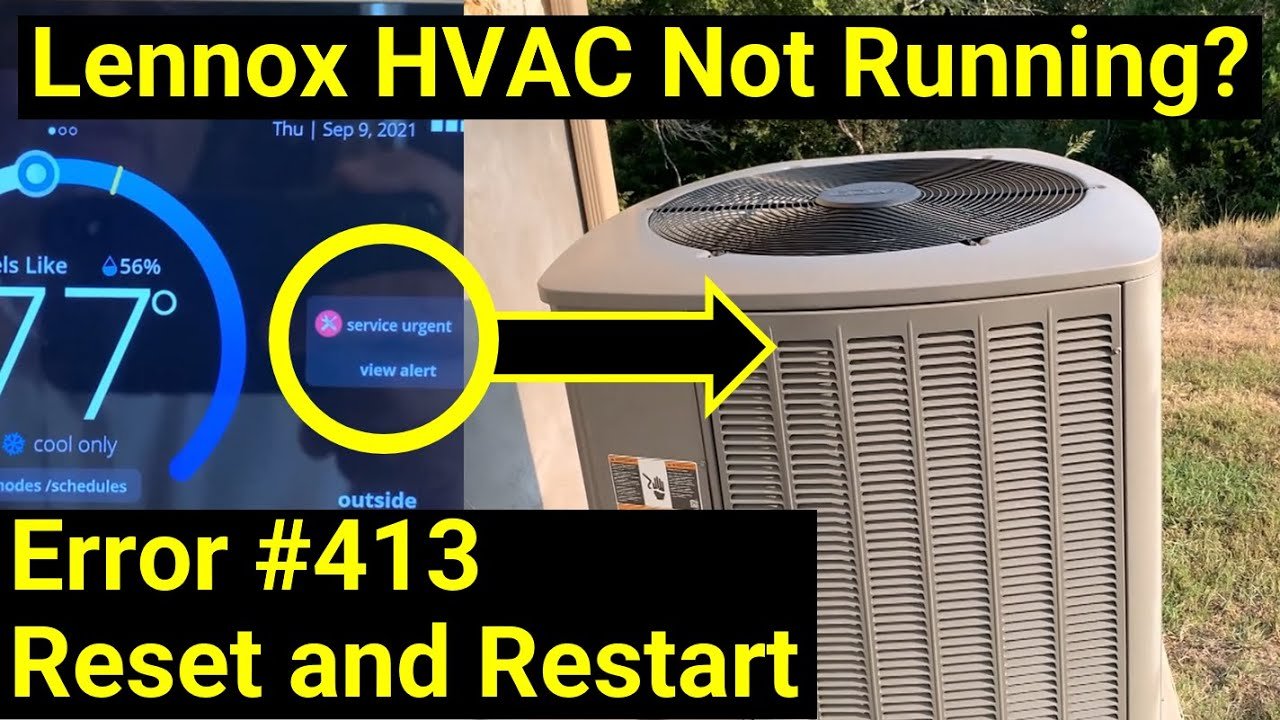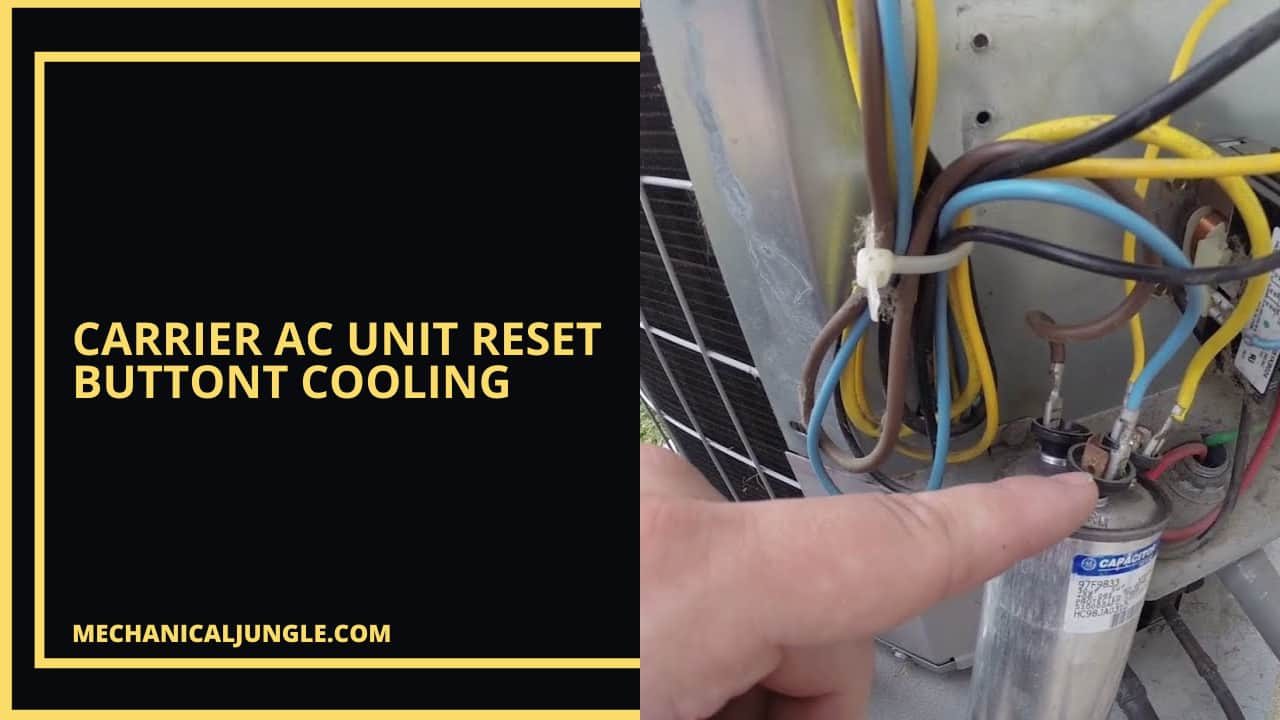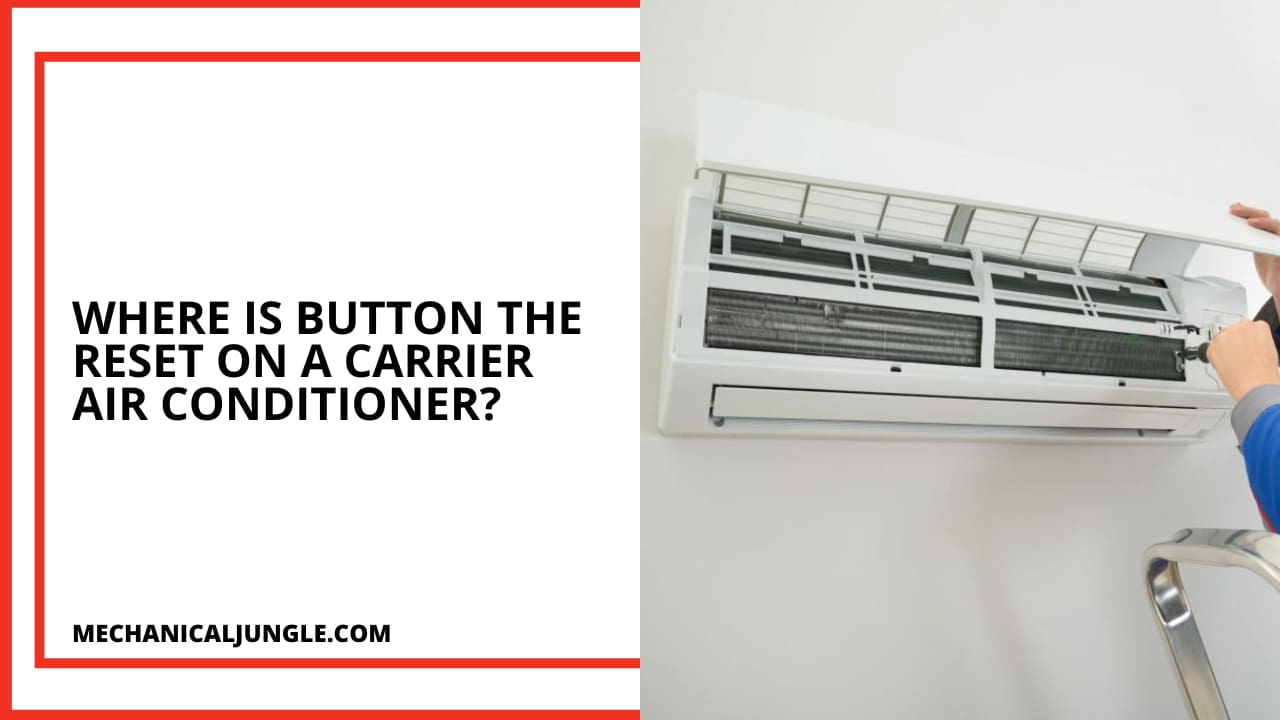Air Conditioner Reset Button Not Working

The air conditioner reset button, a seemingly simple component, can be a source of frustration when it fails to function. For HVAC students, seasoned technicians, and employers alike, understanding the intricacies of this issue is crucial. This article delves into the reasons why an AC reset button might not work, offering insights valuable to those pursuing a career in HVAC, those seeking to enhance their skills, and businesses looking to hire qualified professionals.
Understanding the AC Reset Button: Function and Purpose
The reset button on an air conditioner is essentially a circuit breaker or a safety switch designed to trip when the system experiences an overload, short circuit, or other electrical fault. Its primary function is to protect the compressor and other vital components from damage. When the button pops out (or needs to be pressed on newer models), it indicates that the system has detected a problem and shut down as a safety precaution.
Pressing the reset button is intended to restore power after the issue has been resolved. However, if the underlying problem persists, the button will either not stay engaged, or will pop out again shortly after being reset. This is a critical indicator that further investigation is required, rather than simply repeatedly resetting the system.
Troubleshooting a Non-Functional Reset Button
Possible Causes and Solutions
Several factors can contribute to a reset button failing to engage or remain engaged:
- Overload: The most common cause is an electrical overload. This can occur due to a malfunctioning capacitor, a locked rotor motor in the compressor, or excessive voltage.
- Short Circuit: A short circuit within the wiring or components can also trigger the reset. This is often identifiable through burnt smells or visible damage.
- Faulty Compressor: A failing compressor, struggling to start or experiencing internal issues, can draw excessive current, causing the reset to trip.
- Capacitor Issues: Capacitors provide the initial jolt of energy required to start the compressor. A weak or failing capacitor can lead to the compressor drawing excessive current, tripping the reset.
- Wiring Problems: Loose connections, corroded wiring, or damaged insulation can all contribute to electrical faults that trigger the reset.
- Contactor Problems: The contactor is an electrical switch that controls power to the compressor. Faulty contactors can cause arcing and excessive current draw.
- High Head Pressure: This occurs when the refrigerant pressure is too high. Several issues can cause this, including a dirty condenser coil, blocked refrigerant lines, or overcharging of refrigerant.
- Faulty Reset Button: In rare instances, the reset button itself can be defective. This can be tested using a multimeter.
Diagnostic Steps
When confronted with a non-functional reset button, a systematic approach is essential:
- Visual Inspection: Begin by visually inspecting the unit for any signs of damage, such as burnt wires, leaks, or corrosion.
- Voltage Testing: Use a multimeter to check the voltage at the unit to ensure it is within the acceptable range.
- Capacitor Testing: Test the capacitors using a capacitor tester to determine if they are within their specified capacitance range.
- Compressor Testing: Check the compressor windings for continuity and resistance to ground. A short to ground indicates a failed compressor.
- Contactor Inspection: Visually inspect the contactor for signs of burning or pitting on the contacts. Test for continuity across the contacts when the unit is powered on.
- Refrigerant Pressure Check: Using manifold gauges, check the suction and discharge pressures to identify potential issues like high head pressure. Note: Refrigerant handling requires EPA 608 certification.
Important Safety Note: Working with electrical components can be dangerous. Always disconnect power to the unit before performing any diagnostic or repair work. If you are not comfortable working with electricity, consult a qualified HVAC technician.
Career Implications and the Importance of Certification
The ability to diagnose and repair issues related to air conditioning systems, including those involving the reset button, is a fundamental skill for HVAC technicians. The demand for qualified technicians is consistently high. The Bureau of Labor Statistics projects a growth rate of approximately 6% for HVAC mechanics and installers over the next decade.
Earning certifications such as NATE (North American Technician Excellence) can significantly enhance career prospects. NATE certification demonstrates a technician's knowledge and competency, making them more attractive to employers and increasing their earning potential. Experienced technicians often pursue NATE certifications in specific areas, such as air conditioning, heat pumps, or commercial refrigeration.
Furthermore, all technicians who handle refrigerants are required to hold EPA 608 certification. This certification ensures that technicians understand and comply with regulations regarding the proper handling and disposal of refrigerants, minimizing environmental impact.
The salary range for HVAC technicians varies depending on experience, location, and certifications. According to recent data, the median annual wage for HVAC mechanics and installers is around $50,000, with top earners exceeding $75,000 per year. Pursuing advanced certifications and specializing in areas like commercial HVAC or building automation systems can lead to even higher earning potential.
Career Paths in HVAC
The HVAC industry offers diverse career paths:
- Entry-Level Technician: Typically involves assisting experienced technicians with installations, repairs, and maintenance.
- Service Technician: Focuses on diagnosing and repairing HVAC systems in residential and commercial settings.
- Installation Technician: Specializes in installing new HVAC systems.
- Commercial HVAC Technician: Works on larger, more complex HVAC systems in commercial buildings.
- HVAC System Designer: Designs and plans HVAC systems for new construction or renovation projects. This role often requires a bachelor's degree in mechanical engineering.
- HVAC Sales Engineer: Sells HVAC equipment and services to commercial and industrial clients.
Many technicians start as apprentices, gaining on-the-job training while also completing formal education at a trade school or community college. Apprenticeships typically last for several years and provide a structured path to becoming a skilled HVAC technician.
Real-World Example: Consider Sarah, a recent trade school graduate who started as an apprentice at a local HVAC company. After completing her apprenticeship and earning her EPA 608 and NATE certifications, she became a service technician, specializing in residential air conditioning systems. Her ability to quickly diagnose and repair complex issues, including those related to faulty reset buttons, earned her a reputation as a reliable and skilled technician. Within a few years, she was promoted to a senior technician position and is now training new apprentices.
The Employer's Perspective: Hiring and Training
For employers in the HVAC industry, hiring qualified and skilled technicians is crucial to maintaining a competitive edge. Employers often prioritize candidates with certifications like NATE and EPA 608, as these credentials demonstrate a commitment to professionalism and competence.
Investing in training and development programs for employees is also essential. Providing opportunities for technicians to enhance their skills and knowledge, particularly in areas like advanced diagnostics and troubleshooting, can improve employee retention and productivity. Many HVAC companies offer in-house training programs or partner with local trade schools to provide continuing education opportunities for their employees.
Understanding the intricacies of air conditioning systems, including the function and troubleshooting of the reset button, is just one aspect of a successful career in HVAC. Continuous learning, a commitment to safety, and a dedication to providing excellent customer service are all vital ingredients for success in this dynamic and rewarding field.
Staying Ahead of the Curve: Industry Trends
The HVAC industry is constantly evolving, driven by technological advancements and changing regulations. Staying abreast of these trends is crucial for both technicians and employers.
Some key industry trends include:
- Smart HVAC Systems: These systems utilize sensors and automation to optimize energy efficiency and improve comfort. Technicians need to be proficient in diagnosing and repairing these advanced systems.
- Variable Refrigerant Flow (VRF) Systems: VRF systems are becoming increasingly popular in commercial buildings due to their energy efficiency and flexibility.
- Geothermal Heating and Cooling: Geothermal systems offer a sustainable and energy-efficient alternative to traditional HVAC systems.
- Increased Focus on Energy Efficiency: Government regulations and consumer demand are driving the development and adoption of more energy-efficient HVAC equipment.
By embracing these trends and continuously expanding their knowledge and skills, HVAC professionals can ensure long-term success and contribute to a more sustainable future.










